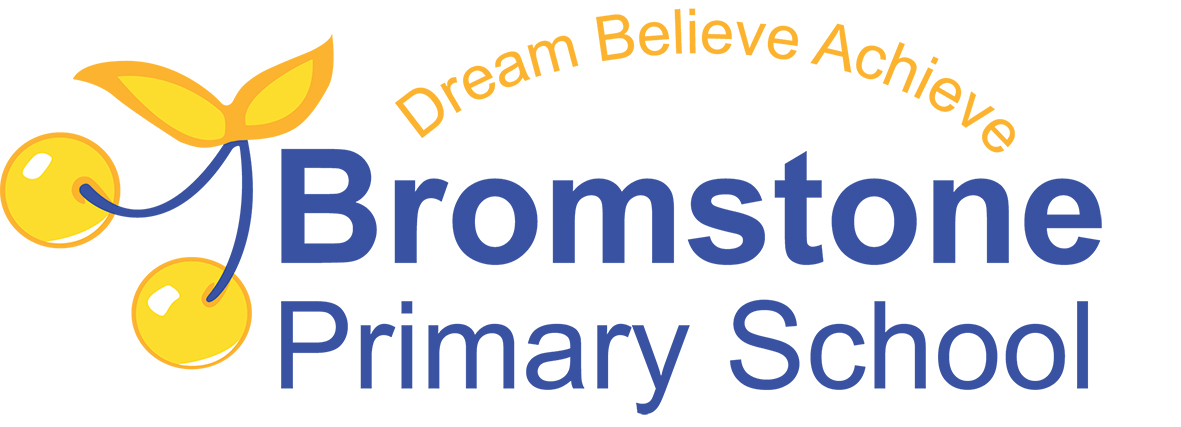
Bromstone Primary School
Computing
Aims
At Bromstone Primary School, we understand the immense value technology plays not only in supporting the Computing and whole school curriculum but overall in the day-to-day life of our school.
We believe that technology can: provide enhanced collaborative learning opportunities; provide better engagement of pupils and easier access to rich content; support conceptual understanding of new concepts and can support the needs of all our pupils.
We aim to:
- Provide an exciting, rich, relevant and challenging Computing curriculum for all pupils. Enthuse and equip children with the capability to use technology throughout their lives.
- Give children access to a variety of high-quality hardware, software and unplugged resources.
- Instil critical thinking, reflective learning and a ‘can do’ attitude for all our pupils, particularly when engaging with technology and its associated resources.
- Teach pupils to become responsible, respectful and competent users of data, information and communication technology.
- Teach pupils to understand the importance of governance and legislation regarding how information is used, stored, created, retrieved, shared and manipulated.
- Equip pupils with skills, strategies and knowledge that will enable them to reap the benefits of the online world, whilst being able to minimise risk to themselves or others.
- Use technology imaginatively and creatively to inspire and engage all pupils, as well as using it to be more efficient in the tasks associated with running an effective school.
- Provide technology solutions for forging better home and school links.
- Utilise computational thinking beyond the Computing curriculum.
- Exceed the minimum government recommended/statutory guidance for programmes of study for Computing and other related legislative guidance (online safety).
Safeguarding: Online Safety
Online safety has a high profile at Bromstone Primary School for all stakeholders. We ensure this profile is maintained and that pupil needs are met by the following:
- A relevant, up-to-date online safety curriculum which is progressive from Early Years to the end of Year 6.
- A curriculum that is threaded throughout other curriculums and embedded in the day-to-day lives of our pupils.
- Through our home/school links and communication channels, parents are kept up to date with relevant online safety matters, policies and agreements. They know who to contact at school if they have concerns.
- Our online safety policy (in addition to our safeguarding policy) clearly states how monitoring of online safety is undertaken and any incidents/infringements to it are dealt with.
- Filtering and monitoring systems for all our online access.
- Data policies which stipulate how we keep confidential information secure.
Curriculum
EYFS
We aim to provide our pupils with a broad, play-based experience of Computing in a range of contexts. We believe the following:
- Early Years learning environments should feature ICT scenarios based on experience in the real world, such as in roleplay.
- Pupils gain confidence, control and language skills through opportunities to ‘paint’ on the interactive board/devices or control remotely operated toys.
- Outdoor exploration is an important aspect, supported by ICT toys.
- Recording devices can support children to develop their communication skills. This is especially useful for children who have English as an additional language.
Key Stage 1 Outcomes
- Understand what algorithms are, how they are implemented as programs on digital devices, and that programs execute by following a sequence of instructions.
- Write and test simple programs.
- Organise, store, manipulate and retrieve data in a range of digital formats.
- Communicate safely and respectfully online, keeping personal information private, and recognise common uses of information technology beyond school.
Key Stage 2 Outcomes
- Design and write programs that accomplish specific goals, including controlling or simulating physical systems; solve problems by decomposing them into smaller parts.
- Use sequence, selection and repetition in programs; work with variables and various forms of input and output; generate appropriate inputs and predicted outputs to test programs.
- Use logical reasoning to explain how a simple algorithm works and to detect and correct errors in algorithms and programs.
- Understand computer networks including the internet; how they can provide multiple services, such as the world- wide web; and the opportunities they offer for communication and collaboration.
- Describe how Internet search engines find and store data; use search engines effectively; be discerning in evaluating digital content; respect individuals and intellectual property; use technology responsibly, securely and safely.
- Select, use and combine a variety of software (including internet services) on a range of digital devices to accomplish given goals, including collecting, analysing, evaluating and presenting data and information.
Resources
- A range of resources are available which successfully support delivering the Computing curriculum and enable all learners to reach their full potential.
- Suggestions for getting the very best out of the resources are made available to teaching and support staff by the Computing Leader.
- Audits of school resources are conducted regularly by the Computing Leader, which informs bidding for budget allocations.
- The Computing Leader keeps up to date with the latest technology resources and will make informed decisions about possible procurement of them through their own research.
Inclusion
At Bromstone Primary School, we aim to enable all children to achieve to their full potential. This includes children of all abilities, social and cultural backgrounds, those with disabilities, EAL speakers and SEN statement and non-statemented.
We place particular emphasis on the flexibility technology brings to allowing pupils to access learning opportunities, particularly pupils with SEN and disabilities. With this in mind, we will ensure additional access to technology is provided throughout the school day and in some cases beyond the school day.